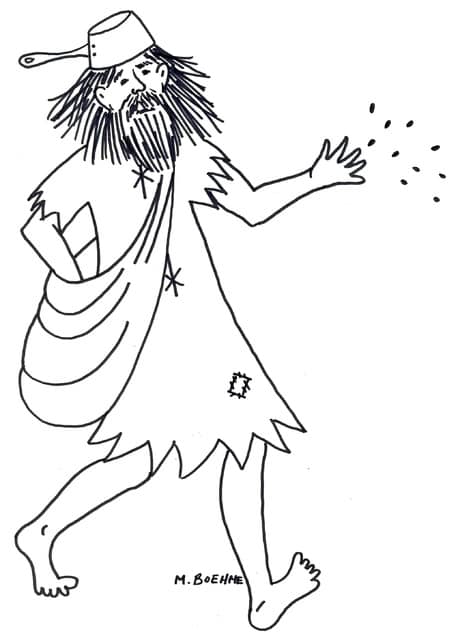
By Steve Boehme

John Chapman could be described as a successful real estate speculator with a good understanding of how to increase your wealth through compound interest. He is also one of the most misrepresented and misunderstood figures in American history.
His biggest contribution to life on the American frontier was to create a renewable supply of hard cider and “applejack,” the favorite liquors of the expanding American population of his time. He was a religious zealot, a wild-eyed Swedenborgian missionary with the flinty toughness of Daniel Boone and the gentleness of a Hindu. Oh, and by the way, he planted millions of apple trees from seed.
Later reinvented as the cartoonish “Johnny Appleseed,” Chapman was a pioneer who made a huge impact on America’s frontier, particularly in Ohio. He started a chain of nurseries reaching from western Pennsylvania through central Ohio and into Indiana.
With the canny shrewdness of a real estate developer, staying just ahead of the westward migration, Chapman planted nurseries near remote settlements. When he died in 1845, his estate included 22 properties totaling over 1,200 acres of prime waterfront real estate.
To discourage speculation and encourage stability, land grant deeds in the Northwest Territory required homesteaders to plant apple and pear orchards. Grafted apple trees with edible fruit were already available in Ohio, but Chapman grew his from seed.
Apples don’t sprout “true to type” from seed, so fruit from Chapman’s trees was mostly bitter, useful only for making hard cider, which could be distilled into applejack. Safer, tastier and much easier to make than wine or grain liquors, apple cider was the alcoholic drink of choice on the American frontier. In fact, there was little else to drink. In rural areas, cider replaced wine, beer, coffee, tea and even water.
Young apple trees were essential supplies for any settler headed for the frontier, and Chapman offered 2 and 3-year-old saplings for about six cents each. He had a sixth sense for where the next wave of development would be, and by the time the demand was there he had a well-located nursery in full production, run by a local manager.
In addition to apples, Chapman introduced many medicinal herbs to Ohio, and also stinking fennel. This annoying weed was once believed to prevent malaria; today it’s commonly called “Johnnyweed” by Ohioans.
Johnny Appleseed’s legacy became a target during Prohibition, when Carrie Nation’s axe was used to chop down apple trees along with saloons. Because of their popularity and for religious reasons, hard cider and applejack enjoyed some immunity from the early Prohibitionists, but by 1900, they were attacked along with wine, beer and grain spirits.
Johnny’s legend was reinvented, his image sanitized for political correctness.
In his excellent book “The Botany of Desire,” author Michael Pollan explores the Johnny Appleseed legend in detail. He concludes that Chapman was “the American Dionysus.” Where Dionysus brought civilization the gift of wine, Chapman offered easier access to the pleasures of alcohol. Pollan views both men as bridges between nature and culture, harnessing the magic of fermentation to create social change.
The take-home message for gardeners is that apple trees grown from seed will not produce the same fruit as the original apple. Only grafting will produce dependable offspring with the qualities of the parent apple tree.
Steve Boehme and his wife, Marjorie, own GoodSeed Nursery & Landscape, near Winchester, Ohio. More information is available at www.goodseedfarm.com or by calling 937-587-7021.
ID, 'source', true); $sourcelink = get_post_meta($post->ID, 'sourcelink', true); $sourcestring = '' . __('SOURCE','gabfire') . ''; if ($sourcelink != '') { echo "
$sourcestring: $source
"; } elseif ($source != '') { echo "$sourcestring: $source
"; } // Display pagination $args = array( 'before' => '' . __('Pages:','gabfire'), 'after' => '
', 'link_before' => '', 'link_after' => '', 'next_or_number' => 'number', 'nextpagelink' => __('Next page', 'gabfire'), 'previouspagelink' => __('Previous page', 'gabfire'), 'pagelink' => '%', 'echo' => 1 ); wp_link_pages($args); // Display edit post link to site admin edit_post_link(__('Edit','gabfire'),'','
'); // Post Widget gab_dynamic_sidebar('PostWidget'); ?>